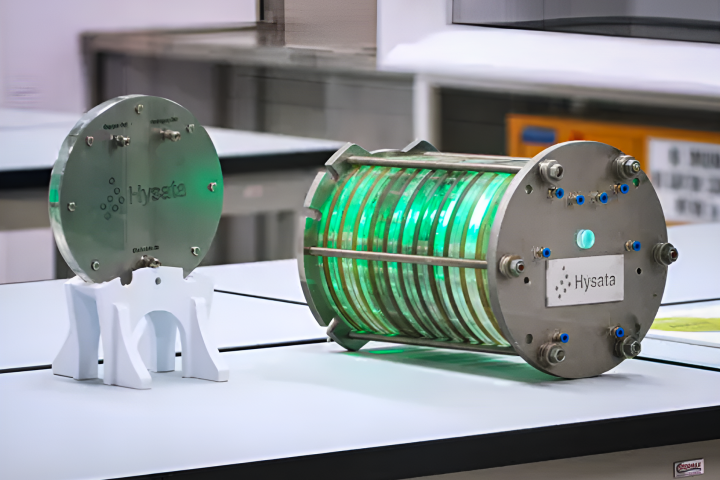Amidst concerns over the accumulation of atmospheric greenhouse gases, many research institutes have been looking into methods of carbon sequestration – the capture, storage and even possible reuse of carbon dioxide emissions. Unfortunately, some of the approaches require a considerable input of power, in order to release the captured CO2. A new material developed at Australia’s Monash University, however, requires nothing but sunlight.
The material is a metal organic framework, or MOF. These are two- or three-dimensional crystalline compounds, made up of clusters of metal atoms linked by organic molecules. MOFs have an enormous internal surface area for their size, so they’re good candidates for storing large quantities of gases such as CO2 or hydrogen.
The Monash material was made using using light-sensitive azobenzene molecules. The resulting MOF is able to adsorb large amounts of CO2, but in a process known as dynamic photo-switching, it changes its structure when irradiated with sunlight. When this happens, it releases the CO2 in a manner said to be “like wringing out a sponge.” By contrast, some other carbon sequestration technologies utilize a liquid-based capture medium, that must be heated in order to release the CO2.
The released carbon dioxide could conceivably be used to produce energy, moved into long-term storage, converted into a harmless mineral, or perhaps even utilized in construction materials.
While the Monash “sponge” is particularly adept at catching and releasing CO2, the researchers believe that by using the azobenzene molecules in other MOF formulations, other gases could also be targeted.
A paper on the research was published yesterday in the journal Angewandte Chemie.
Source: Monash University




